Spring Fungi at the Sierra Nevada Field Campus
Spring is the universal time of rejuvenation. For myself, it represents the time of year where I can get back to my roots. This means returning to California to re-connect with my fungal family (figuratively speaking) in mid-June to enjoy the backdrop of the Sierra Nevada Mountains.
The Sierra Nevada Field Campus (San Francisco State University) is a remote educational field station managed by San Francisco State University. It offers liberal arts courses in science and art throughout the summer months, and the first week’s offerings has nearly always included the Spring Fungi course instructed by my original mentor in mycology, Dr. Dennis Desjardin.
June is a unique time to observe fungi in the mountains. In order to produce mushrooms, fungi require the right levels of moisture and temperature. With the rising temperatures of spring, comes the melting of snow and the warming of the ground that has been uncovered. This nexus of conditions brings fourth a variety of familiar fungi such as the very common “orange peel fungus”, Caloscypha fulgens, to the gastronomic delights of the “spring king” porcini, Boletus rex-veris.
This year’s Spring Fungi course, held June 11-16, 2017, was preceded with much optimism. After many years of severe drought in California, the rain and snowfall that accumulated in the Sierra Nevada promised a relative bounty of fungal diversity. However, the weather turned out to be more eccentric than anticipated.
The weeks leading up to the field course were warm and dry, which is a good mushroom suppressant. Then, the temperature dropped the night before the course began, resulting in an inch of snow accumulating overnight. (Images 1 and 2 in the photo gallery)
The erratic weather caused some concern. The available sites where we would collect without dealing with snow patches ended up being too dry for fungi to produce mushrooms. The recent drop in temperature had the potential to shut down shut down the ‘fruiting’ of many kinds of fungi. Fortunately, these concerns were somewhat alleviated.
While the relative abundance of any individual mushroom species could not be described as ‘plentiful,’ the number of different species to find was still there for those that were willing to look hard enough.
There were several puffballs out, including the iconic Calbovista subsculpta (Image 3), with its football-sized fruit bodies covered in pyramidal warts. On the more diminutive and elegant end of the spectrum there were the 1-3 mm orange cups of Dasyscyphus bicolor (Image 4). The outer surface of these cups is covered in white hairs giving it a cute and fuzzy quality. On the other hand, the funnel shaped Arrhenia obscurata (Image 5) lives up to its “obscure” name due to its small stature and coloration. This makes it blend into the ground so well that by the time you notice your first patch you’ve already trampled on several others.
When the weather is warm and dry, it can be hard to locate mushrooms. One strategy when hunting them is to tear open decaying logs. Fungi are one of the most efficient recyclers in nature.
Better than any other organism, fungi break down and decay woody debris, returning the carbon locked up in this material back into nature. Rotting logs are rotten because fungi make their way into the crevasses in the wood and secrete extracellular enzymes to digest it externally. This increases the wood’s porosity and softens it to the point where other organisms can begin to work at it too.
Acting as one of these organisms, I will tear into these soft logs, looking for the wood that has become sponge-like and moist. It is in these hidden places that I enhance my chances of finding a mushroom buried deep and protected in the damp and humid confines of the rotting wood.
This is how I stumbled upon Resupinatus applicatus (Image 6), lining a cavity with its tiny gray-brown fruit bodies. Imagine if you will, a mushroom that grows no larger than 1.5 millimeters across. It will produce hundreds of little structures growing wood that are literally the size of a sesame seed. Producing structures of this size makes sense when considering the space limited environment that you find it in. It is the “little” discoveries like this that bring into sharp relief the wondrous diversity contained within the kingdom Fungi.
Fortunately, following the early snow, warmer weather and sunnier days graced the course as the week progressed. (Images 7 and 8) Students in the Spring Fungi course learn how to observe a mushroom’s features from the macroscopic perspective of the naked eye, as well as the ornate cellular characteristics of different mushroom parts through the benefit of a microscope. This part of the course usually happens midday and is preceded by a lecture and field collecting in the morning and followed by a seminar in the evening. The evening seminar is held after dinner and is usually a time to talk about fungal diversity and tell stories about fungi.
I gave a lecture on Tuesday. It was based on my previous research on the ecology and evolution of the mushroom genus Laccaria and discussed how I intend to expand this research in my position at Denver Botanic Gardens and the southern Rockies.
The next evening, my friend and colleague Dr. Brian Perry (California State University East Bay), gave a fascinating talk about the diversity of soil and endophytic (plant inhabiting) fungi of the Hawaiian Islands. (Image 9)
Despite the progress in the weather, and the success of our discoveries, we were still concerned that this was going to be one of the lower diversity years. For 21 years the course has kept a species list that accounts for the diversity of fungi collected and identified.
Due to the slow start we had gotten off to earlier in the week, we were currently trending behind the curve in the species count. In fact, we had yet to encounter the orange peel fungus Caloscypha fulgens, which was so abundant last year that you couldn’t avoid stepping on it. And last year the course only recorded 112 species; the lowest biodiversity since the course began keeping records.
So we had reason to be concerned for our species count. But we doubled our efforts in searching for fungi and found many interesting things, some of which have never been recorded in the class before. In the end we collected a total of 128 species over the week of the class.
While we don’t expect a parade for this achievement, we were happy to have found the diversity we did, and to take success wherever it may present itself – especially if success is measured in terms of selling Sam Mitchel Herbarium’s 50th Anniversary t-shirts. (Image 10)
Which I do.
Mountain Mushroom Gallery
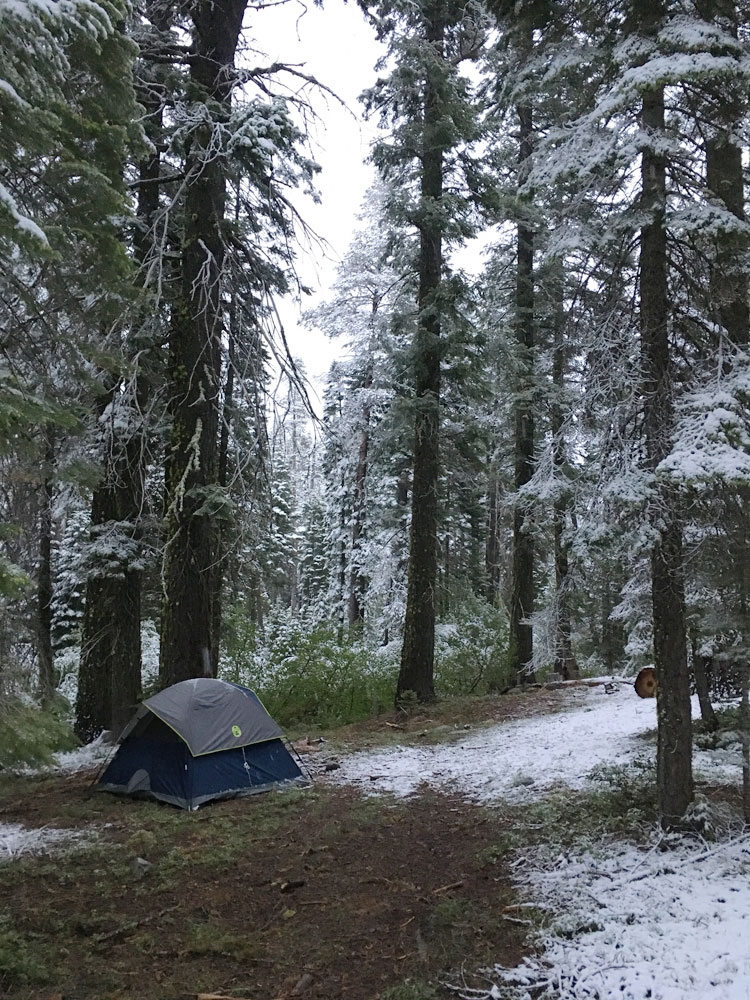
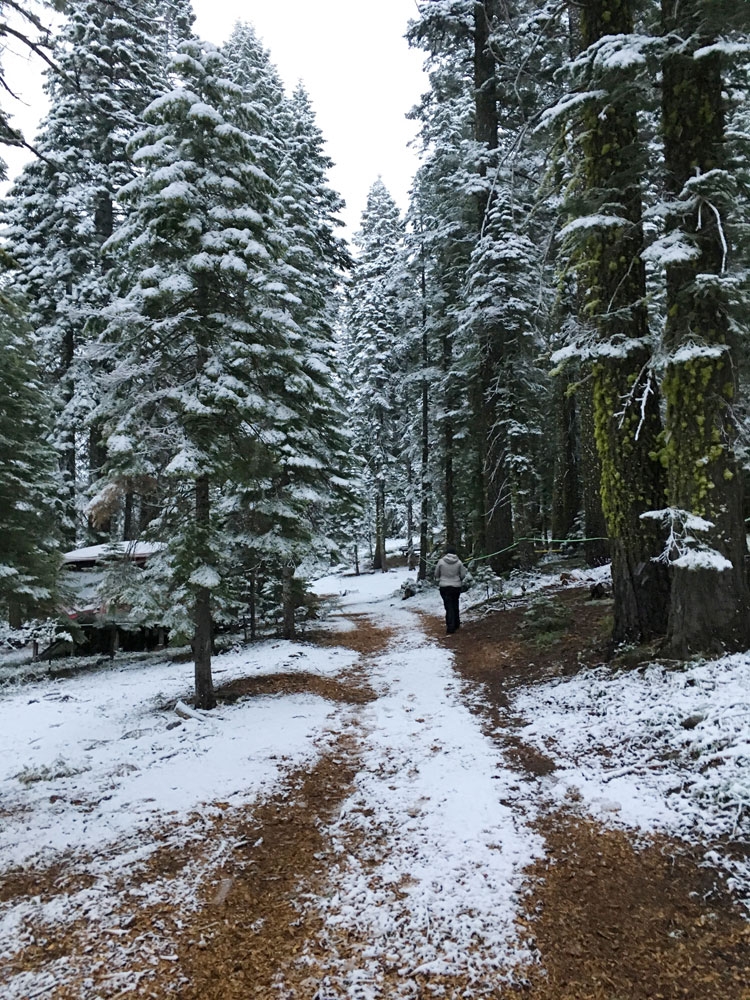





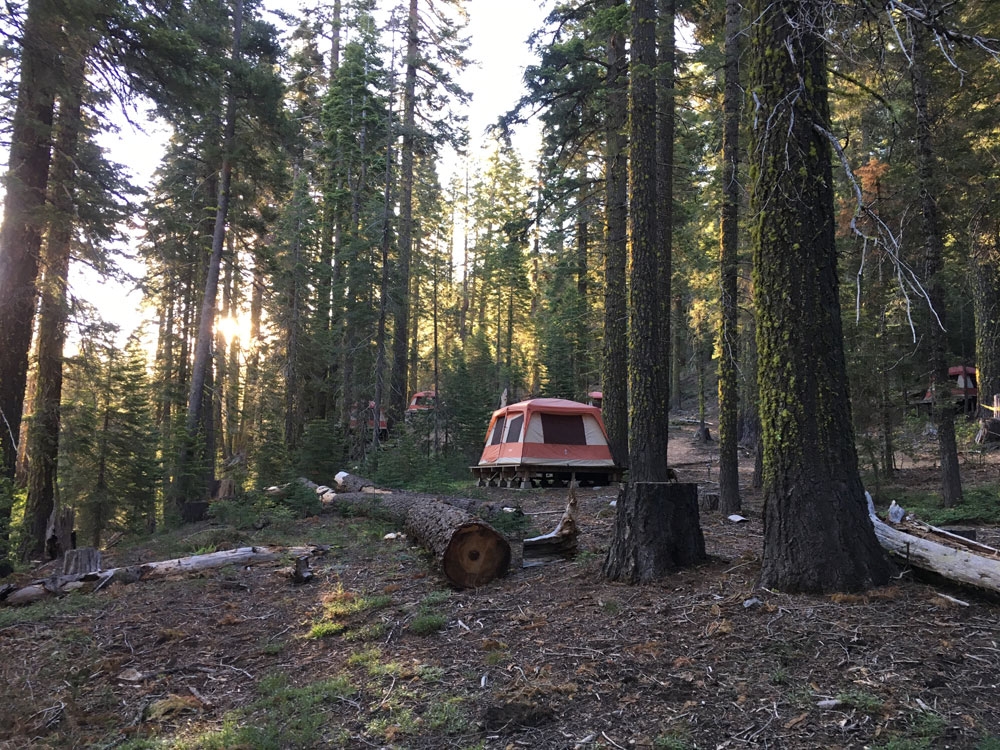
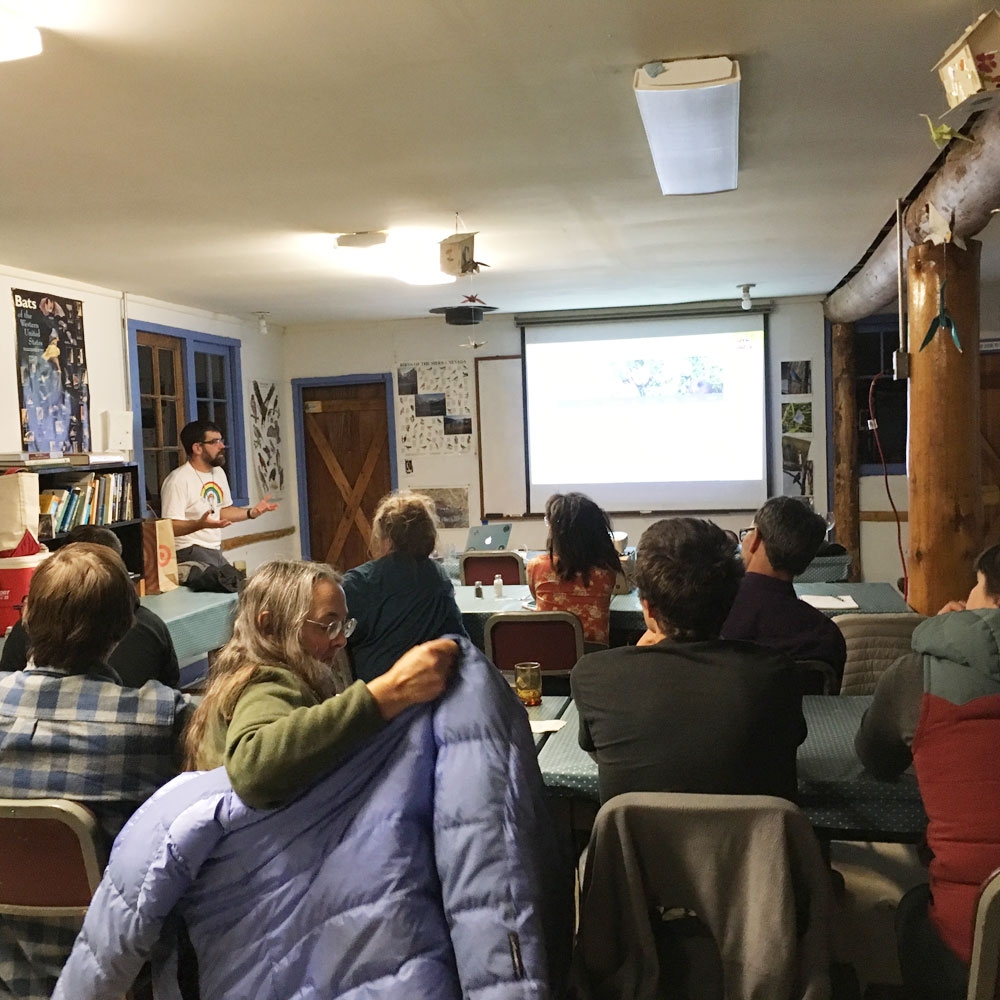
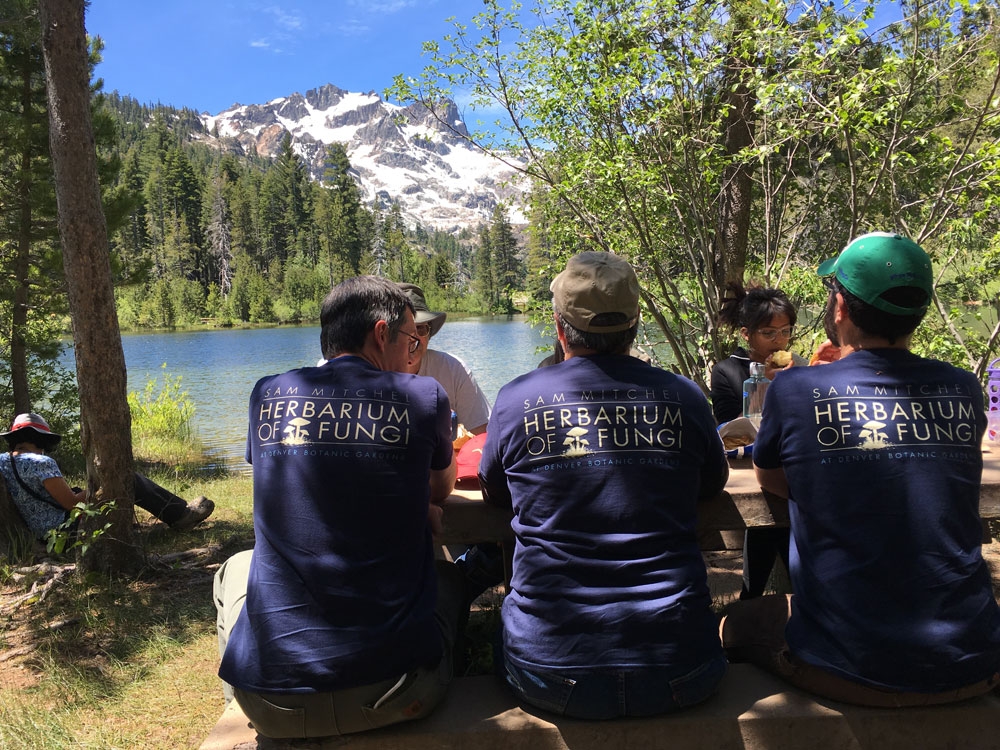
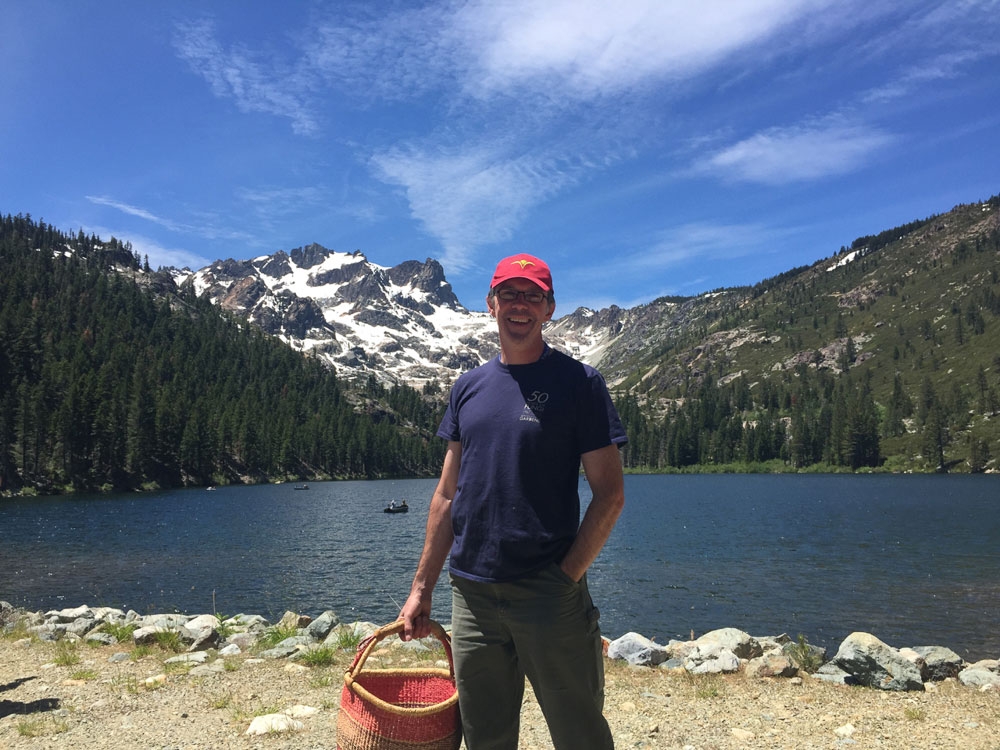
Comments
Sierra Field Station
Hi Andy,
So glad that you were able to return to CA and your fungal roots! On a good year, Yuba Pass is a wonderland of cool and unusual fungi, with the added bonus of those springtime delicacies like Boletus rex-veris and morels and the very yummy Agaricus "albolutescens" now moronii. And of course, the unique hunting habs of those western snowmelt fungi and the aquatic oddballs at Sand Lake! I have really missed the snowmelts in particular, since we have had several years w/out snow.
Keen eyes, foreknowlege and lots of warm bodies can usually rustle up some fine fungal finds, even in the worst of the mushroom years.
It was odd that things got such a slow start in the High Sierra this year, what with our tremendous snowfalls and a rather spectacular coastal fall season.
I guess there are no guarantees of mushrooms in the field! Still, a beautfiul place to spend a week, regardless of numbers counted.
David and I are heading up a BAMS group in another week, to check out the fall fungi-flora of Yuba Pass. Word is that there is plenty of diversity right now, and we are no more likely to get snowed upon that you were in the spring!
All the best,
Debbie Viess
SNFC Magic and Mushrooms
Hi Debbie,
Yes, the SNFC has a special place in my heart. From the field trips I took as an undergraduate in Dennis' class, to working for Jim Steele in the summers. Since then my parent's have pretty much adopted the place as their own and spend nearly the entire summer up there. Regardless, I need to make the pilgrimage up there every year for the spring fungi course. It's simply the best way to recharge and reconnect with family and friends.
Hope the mushrooms are treating you well.
Andy...
Add new comment